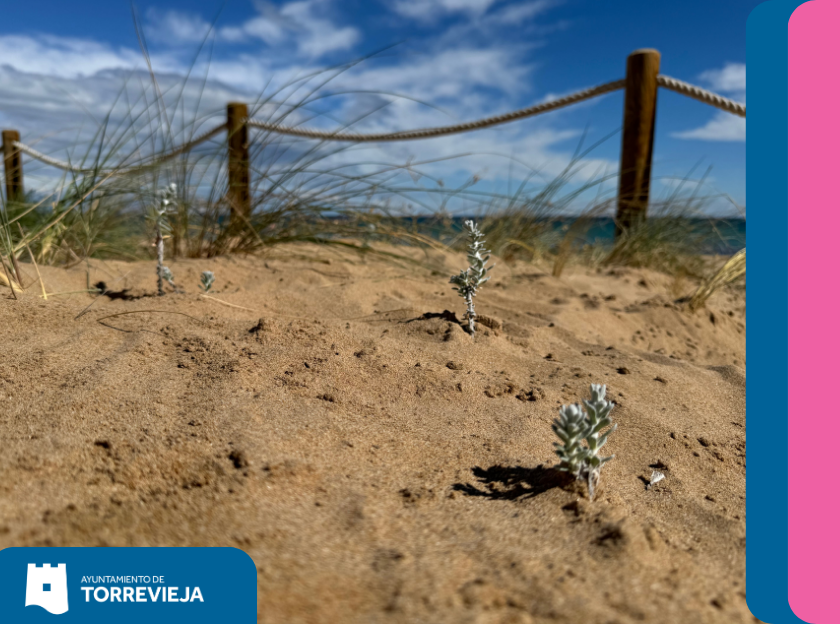Recovery of the dunes in Torrevieja: A step towards the preservation of the coastal environment

The Councilor for the Environment of the Torrevieja City Council, Antonio Vidal, reports that last Tuesday, a team from the NGO Xaloc carried out a significant plantation of dune species in the southern area of La Mata beach in Torrevieja, thanks to the which a total of 245 seedlings of two emblematic species were established: cottonwood and barron.
The cottonwood plant is a dune plant that disappeared from a large part of the Valencian coast, having only one specimen in Torrevieja (which was also the southernmost located in the entire Valencian Community) and that in recent years the Department of Environment
Environment has been recovering specimens from the small existing populations in Guardamar del Segura and the Devesa de El Saler in Valencia.
Xaloc's actions will contribute to this recovery in the municipal area and promote its awareness among citizens by being located in an area of high visibility. On the other hand, the barrón is a grass very characteristic of the dunes near the sea, and that used to be used for the traditional construction of roofs due to its high impermeability, as was the case, for example, of the shelters that the police along the entire coastline of Torrevieja.
The action of The past was delimited by the Provincial Coastal Service of Alicante.
Actions such as the one carried out by Xaloc and the Torrevieja City Council, favor the creation of dune biodiversity points in densely populated places, contributing to the dissemination of threatened dune species among citizens and showing the beaches as the natural spaces that they really are.
In this sense, Torrevieja still houses dune areas and remains of coastal sands of great international importance that serve as home to endangered species, such as the snowy plover, the Iberian skink, the dune bellflower, the cottonmouth or the maritime juniper. But they also mitigate the loss of sand on the beaches, provide added value when it comes to obtaining awards such as Q-tourism and blue flags (which
They position the beaches in an international context of greater environmental sensitivity on the part of users) and contribute to the recovery of landscapes and uses that are part of the hallmarks of this territory.
In general, dune systems are in serious danger and are considered one of the most threatened natural ecosystems in the Mediterranean. The loss of these dunes
implies a significant impact on coastal conservation, biodiversity, environmental services, the economy and the well-being of the population.
The initiative to recover and conserve the dunes is part of a broader Xaloc project for the revitalization of Valencian beaches, financed by Caixabank. These actions will continue in Torrevieja in the coming years thanks to the active collaboration of the City Council and the Wildlife Service of the Generalitat Valenciana.
In addition, this project has the collaboration of companies such as Casa Intur and AFEMPES (Association of Relatives of the Mentally Ill of Paterna), an entity that has contributed to the production of the plants introduced to La Mata beach. The production of these threatened species has been possible thanks to the financing of the
European funds EAFRD and Next Generation.
The renaturalization of dunes is not only essential to recover and conserve biodiversity, but also to mitigate the impacts of climate change. This is a significant step towards preserving our valuable coastal ecosystems and towards a more sustainable future.